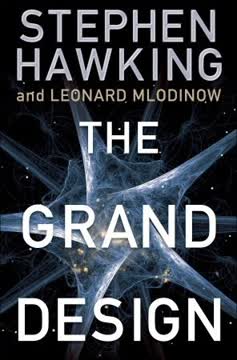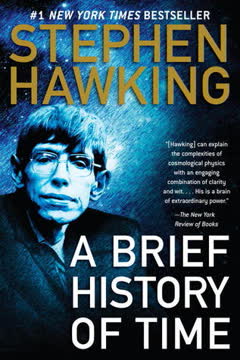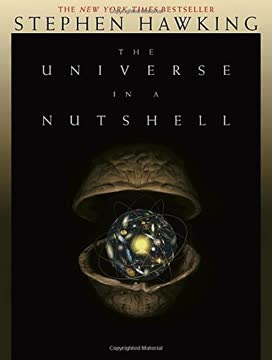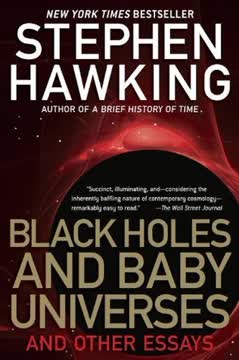Key Takeaways
1. Science Replaces Myth: Nature Follows Decipherable Principles
Ignorance of nature’s ways led people in ancient times to invent gods to lord it over every aspect of human life.
From Gods to Laws. Ancient civilizations attributed natural events to deities, but figures like Thales of Miletus proposed that nature follows consistent, decipherable principles. This marked the beginning of replacing mythical explanations with the concept of a universe governed by natural laws.
Early Scientific Inquiry. The Ionians, including Pythagoras and Archimedes, made significant strides in understanding the physical world. Pythagoras discovered mathematical relationships in music, while Archimedes formulated laws of levers, buoyancy, and reflection. These early discoveries laid the groundwork for theoretical physics.
The Scientific Revolution. The modern concept of laws of nature emerged in the 17th century with figures like Kepler, Galileo, and Descartes. Newton's laws of motion and gravity further solidified this concept, leading to widespread acceptance of scientific laws as rules based on observed regularities and providing testable predictions.
2. Model-Dependent Realism: Reality Is Interpretation
There is no picture- or theory-independent concept of reality.
Subjective Reality. The book introduces model-dependent realism, suggesting that our brains interpret sensory input by creating models of the world. These models, whether scientific theories or everyday perceptions, shape our understanding of reality.
Ptolemy vs. Copernicus. The Ptolemaic and Copernican systems illustrate that different models can explain the same observations. While the Copernican system simplifies equations of motion, both models offer valid perspectives on the universe. This highlights that the choice of model depends on convenience and perspective.
The Brain as a Model Builder. Our brains actively construct mental images from sensory data, filling in gaps and creating three-dimensional representations. This process demonstrates that our perception of reality is not direct but shaped by our brain's interpretive structure.
3. Quantum Physics: Reality Exists as Probabilities
Quantum physics is a new model of reality that gives us a picture of the universe.
Wave-Particle Duality. Quantum physics reveals that particles like electrons and molecules exhibit wave-like behavior, challenging classical notions of reality. The double-slit experiment demonstrates that particles can interfere with themselves, suggesting that they take every possible path simultaneously.
Uncertainty Principle. Heisenberg's uncertainty principle states that there are limits to our ability to simultaneously measure certain properties, such as position and velocity. This principle implies that the outcomes of physical processes cannot be predicted with certainty, reflecting a fundamental randomness in nature.
Feynman's Sum Over Histories. Richard Feynman proposed that particles take every possible path between two points, each with a certain phase. The sum of these phases determines the probability of the particle reaching a particular destination. This "sum over histories" approach provides a powerful framework for understanding quantum phenomena.
4. Forces of Nature: From Gravity to Electroweak Unification
Nature and Nature’s laws lay hid in night: God said, Let Newton be! and all was light.
The Four Forces. The book outlines the four fundamental forces of nature: gravity, electromagnetism, the weak nuclear force, and the strong nuclear force. Each force governs different interactions and operates at different scales.
Electromagnetism. Maxwell's equations unified electricity and magnetism, revealing that light is an electromagnetic wave. This unification demonstrated the interconnectedness of seemingly disparate phenomena and laid the foundation for modern technology.
General Relativity. Einstein's theory of general relativity revolutionized our understanding of gravity, proposing that mass and energy warp space-time. This curvature dictates the motion of objects, replacing the Newtonian concept of gravity as a force.
5. M-Theory: A Multiverse of Possibilities
M-theory predicts that a great many universes were created out of nothing.
Beyond the Standard Model. The standard model, while successful, is incomplete because it doesn't include gravity and contains numerous adjustable parameters. M-theory, a more fundamental theory, attempts to unify all forces and particles.
String Theory and Extra Dimensions. String theory proposes that particles are not points but vibrating strings, requiring ten dimensions of space-time. These extra dimensions are curled up at a tiny scale, influencing the properties of the universe.
The Multiverse. M-theory allows for a vast landscape of possible universes, each with different laws and physical constants. This multiverse concept suggests that our universe is just one of many, challenging the traditional goal of finding a single, unique theory of everything.
6. Fine-Tuning: The Universe Appears Designed for Life
The most incomprehensible thing about the universe is that it is comprehensible.
Lucky Coincidences. The universe exhibits numerous "lucky" coincidences, such as the precise strengths of the fundamental forces and the value of the cosmological constant. These fine-tunings appear necessary for the existence of life as we know it.
The Anthropic Principle. The weak anthropic principle states that our existence imposes rules determining where and when we can observe the universe. This principle suggests that we can only exist in environments that support life.
The Strong Anthropic Principle. The strong anthropic principle suggests that the laws of nature themselves are constrained by the requirement that life must be possible. This idea raises questions about the origin and nature of these fine-tunings.
7. Top-Down Cosmology: Observation Shapes Reality
We create history by our observation, rather than history creating us.
Quantum Creation. The universe spontaneously appeared, starting off in every possible way. Most of these correspond to other universes. While some of those universes are similar to ours, most are very different.
Observer-Dependent History. In top-down cosmology, the apparent laws of nature depend on the history of the universe, and the history depends on what is being measured. We create history by our observation, rather than history creating us.
Testing the Theory. The top-down theory is testable. The no-boundary condition implies that the probability amplitude is highest for histories in which the universe starts out completely smooth. The amplitude is reduced for universes that are more irregular.
8. Life's Building Blocks: Simple Laws, Complex Systems
The laws of nature tell us how the universe behaves, but they don’t answer the why? questions that we posed at the start of this book.
The Game of Life. Conway's Game of Life demonstrates that simple laws can produce complex features, including self-replication and computation. This example illustrates how complex systems can emerge from simple rules.
Energy and Stability. Any law of nature must dictate that the energy of an isolated body surrounded by empty space is positive, which means that one has to do work to assemble the body. That’s because if the energy of an isolated body were negative, it could be created in a state of motion so that its negative energy was exactly balanced by the positive energy due to its motion.
The Zero-Energy Universe. The total energy of the universe must always remain zero. Because gravity is attractive, gravitational energy is negative: One has to do work to separate a gravitationally bound system, such as the earth and moon.
Last updated:
FAQ
1. What is "The Grand Design" by Stephen Hawking and Leonard Mlodinow about?
- Explores Fundamental Questions: The book addresses profound questions about the universe, such as why there is something rather than nothing, why we exist, and why the laws of nature are as they are.
- Modern Physics Perspective: It presents the latest scientific theories, especially in physics and cosmology, to explain the origins and structure of the universe.
- Model-Dependent Realism: The authors introduce and advocate for "model-dependent realism," suggesting that reality is shaped by the models we use to interpret observations.
- Ultimate Theory Search: The book discusses the quest for a "theory of everything," focusing on M-theory as the leading candidate.
2. Why should I read "The Grand Design" by Stephen Hawking and Leonard Mlodinow?
- Accessible Science: The book makes complex scientific concepts accessible to general readers, using clear explanations and engaging analogies.
- Big Questions Addressed: It tackles some of the most fundamental and intriguing questions about existence, reality, and the universe.
- Current Scientific Thought: Readers gain insight into the latest developments in physics, including quantum theory, relativity, and cosmology.
- Challenging Old Assumptions: The book challenges traditional philosophical and theological explanations, offering a scientific perspective on creation and existence.
3. What are the key takeaways from "The Grand Design" by Stephen Hawking and Leonard Mlodinow?
- No Need for Divine Intervention: The universe can arise naturally from physical laws, without requiring a creator or supernatural intervention.
- Model-Dependent Realism: Reality is not absolute but depends on the models we use to describe and interpret observations.
- M-theory as a Framework: M-theory is presented as the best current candidate for a unified theory of everything, though it may not be a single, unique theory.
- Multiverse and Fine-Tuning: The apparent fine-tuning of the universe for life can be explained by the existence of many universes with different laws.
4. How does "The Grand Design" by Stephen Hawking and Leonard Mlodinow explain the origin of the universe?
- Quantum Creation: The universe can spontaneously arise from nothing due to quantum fluctuations, as allowed by the laws of quantum physics and gravity.
- No-Boundary Condition: The authors propose the "no-boundary" condition, where time behaves like a spatial dimension at the universe's origin, eliminating the need for a singular beginning.
- Sum Over Histories: Using Feynman's "sum over histories," the universe's current state is the result of all possible histories, not a single, unique past.
- No Need for a Creator: The laws of physics, particularly gravity, allow for the spontaneous creation of universes, making a creator unnecessary.
5. What is "model-dependent realism" as described in "The Grand Design" by Stephen Hawking and Leonard Mlodinow?
- Reality as a Model: Model-dependent realism posits that what we perceive as reality depends on the models we use to interpret sensory input and observations.
- No Absolute Reality: There is no single, theory-independent reality; different models can describe the same phenomena equally well.
- Practical Utility: A model is considered "real" if it agrees with observations and is useful for making predictions, regardless of whether it matches an objective reality.
- Examples Provided: The book uses examples like the goldfish in a bowl and the Ptolemaic vs. Copernican models to illustrate this concept.
6. How does "The Grand Design" by Stephen Hawking and Leonard Mlodinow address the laws of nature and their origins?
- Scientific Determinism: The book explains that the universe is governed by scientific laws that are consistent and universal, with no exceptions or miracles.
- Origin of Laws: It discusses the traditional view that God created the laws, but argues that science can explain their origin through physical principles.
- Uniqueness Questioned: The authors question whether there is only one possible set of laws or many, suggesting that M-theory allows for a vast landscape of possible laws.
- Fine-Tuning Explained: The apparent fine-tuning of the laws for life is addressed through the multiverse concept, where many universes with different laws exist.
7. What is M-theory, and why is it important in "The Grand Design" by Stephen Hawking and Leonard Mlodinow?
- Candidate for Theory of Everything: M-theory is presented as the leading framework for unifying all fundamental forces and particles in physics.
- Network of Theories: Rather than a single theory, M-theory is a family of related theories, each valid in different situations, analogous to overlapping maps.
- Extra Dimensions: M-theory requires eleven space-time dimensions and allows for various objects like strings and membranes (p-branes).
- Multiverse Implications: It predicts a vast number of possible universes (up to 10^500), each with different apparent laws, explaining the diversity and fine-tuning observed.
8. How does "The Grand Design" by Stephen Hawking and Leonard Mlodinow explain quantum theory and its implications for reality?
- Wave-Particle Duality: The book explains that particles can behave as both waves and particles, challenging classical notions of definite paths and histories.
- Uncertainty Principle: It discusses Heisenberg's uncertainty principle, which limits the precision with which certain pairs of properties can be known.
- Sum Over Histories: Feynman's approach is highlighted, where particles take all possible paths, and the probability of outcomes is calculated by summing over these histories.
- Observer Effect: Observations affect the system being measured, meaning the past and future are not fixed until observed, leading to a universe with no single history.
9. What is the anthropic principle, and how is it used in "The Grand Design" by Stephen Hawking and Leonard Mlodinow?
- Weak Anthropic Principle: Our existence imposes constraints on the universe we observe; we can only find ourselves in a universe compatible with life.
- Strong Anthropic Principle: Suggests that the laws of nature themselves must allow for the existence of observers like us.
- Fine-Tuning Explained: The anthropic principle is used to explain why the universe appears fine-tuned for life without invoking design or purpose.
- Multiverse Context: In a multiverse, the anthropic principle becomes a selection effect—only universes compatible with life will have observers to notice them.
10. How does "The Grand Design" by Stephen Hawking and Leonard Mlodinow address the question of free will?
- Determinism in Physics: The book argues that all biological processes, including human behavior, are governed by the laws of physics and chemistry.
- Illusion of Free Will: Free will is described as an effective theory—useful for practical purposes but ultimately an illusion due to the complexity of underlying physical laws.
- Effective Theories: Since predicting human behavior from first principles is impossible in practice, psychology and economics treat people as having free will.
- No Exemption for Humans: The laws of nature apply to humans as much as to any other part of the universe.
11. What are some of the most important scientific concepts explained in "The Grand Design" by Stephen Hawking and Leonard Mlodinow?
- Quantum Mechanics: Concepts like wave-particle duality, uncertainty principle, and sum over histories are explained in detail.
- Relativity: Special and general relativity are discussed, including the nature of space-time and gravity as curvature.
- Cosmology: The big bang, cosmic inflation, and the expansion of the universe are covered, along with the evidence supporting them.
- Unification Theories: The book explains the standard model, quantum field theories, string theory, and M-theory as attempts to unify the fundamental forces.
12. What are the best quotes from "The Grand Design" by Stephen Hawking and Leonard Mlodinow, and what do they mean?
- "Philosophy is dead." – The authors argue that philosophy has not kept up with modern science, and that scientists now lead the quest for knowledge about the universe.
- "Spontaneous creation is the reason there is something rather than nothing, why the universe exists, why we exist." – This encapsulates the book's central claim that the universe can create itself from nothing due to the laws of physics.
- "There is no picture- or theory-independent concept of reality." – This quote summarizes model-dependent realism, emphasizing that our understanding of reality is always tied to the models we use.
- "The universe does not have just a single existence or history, but every possible version of the universe exists simultaneously." – This reflects the quantum view that all possible histories are real until observed, challenging classical notions of a single, objective reality.
Review Summary
The Grand Design receives mixed reviews. Many praise Hawking's ability to explain complex physics concepts, though some find it oversimplified. Readers appreciate the historical context and thought-provoking ideas about the universe's origins. Critics argue that Hawking's dismissal of philosophy and God is premature. The book's accessibility is noted, but some find certain sections challenging. Overall, it sparks curiosity about cosmology and quantum physics, though its conclusions remain controversial. Hawking's wit and intellect shine through, making it an engaging read for those interested in theoretical physics.
Similar Books


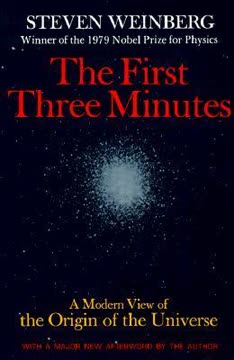

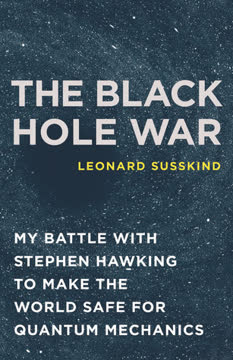



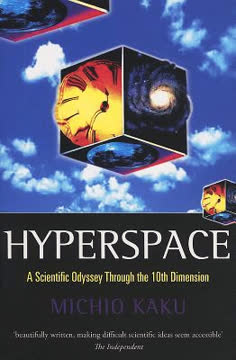

Download PDF
Download EPUB
.epub digital book format is ideal for reading ebooks on phones, tablets, and e-readers.
